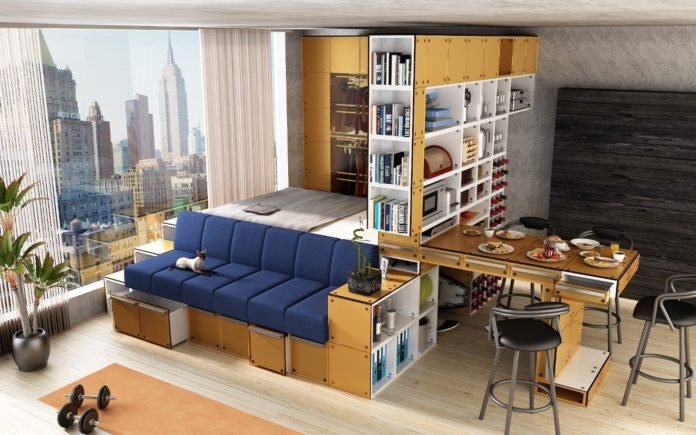Maximizing functionality in a limited space
Living in a confined space can present challenges, especially when it comes to organizing furniture and accessories. However, with the help of carefully planned interior design, even the smallest space can be made as functional and comfortable as possible.
1. Rational use of vertical space
Vertical space often goes unused in most homes. However, with the right selection of furniture and storage, you can significantly increase the available space. Use shelves, hangers, and cabinets to place items and clear the floor. Vertical shelves and shelving can also serve as a decorative element, adding visual interest to a space.
2. Multifunctional furniture
In rooms with limited space, multifunctional furniture becomes a real salvation. Pull-out sofas that can double as a sleeper or lounge sofa, or coffee tables with built-in storage will help optimize the space and make it more functional.
3. Light and openness
Using natural light and creating a feeling of spaciousness can greatly enhance the functionality of a space. Use curtains and blinds that let in as much light as possible. The open floor plan also contributes to the feeling of spaciousness and freedom in the room.
The epitome of aesthetics and functionality
Good interior design combines aesthetics and functionality in equal measure. Space optimization should be accompanied by the creation of a pleasant atmosphere and a harmonious design that reflects the personality and style of the home owner.
1. Color palette
The choice of color palette plays an important role in creating an aesthetic and functional interior. Light colors will help visually expand the space and create a feeling of light and spaciousness. However, don’t be afraid to experiment with bright accents or rich hues to add interest and character to a room.
2. Furniture and accessories
The choice of furniture and accessories is also important to create an aesthetically pleasing and functional interior. Optimally select the dimensions of the furniture so that it fits the space and does not create congestion. Choose items that, in addition to their function, serve as a decorative element that adds personality and style to the room.
3. Proper placement
Proper placement of furniture and accessories plays a key role in optimizing space and creating an ergonomic environment. Place furniture in such a way as to ensure comfort and ease of use of each area of the room. Consider the functional needs and flow of movement in the room to create a harmonious and effective composition.
Final Thoughts
Optimizing space in a home through interior design is an art that requires attention to detail, creativity and an understanding of functional needs. It is important to strike a balance between aesthetics and functionality in order to create a pleasant and comfortable space that reflects the personality and style of the home owner.
By following the principles of maximizing vertical space, using multi-functional furniture, skillful use of light, and creating a harmonious design, you can make your home functional and stylish, no matter the size. The art of functionality in interior design lies in the ability to transform even the most limited space into a cozy and efficient home. Remember that every element and detail in the interior should have its own function and be thoughtful in terms of space usage.
In addition to organizing furniture and accessories, don’t forget about storage. Use hidden storage systems, built-in cabinets, shelves and drawers to optimize space and get rid of clutter as much as possible.
It is also important to take into account the personal needs and preferences of the home owner. Each person has their own unique needs, and interior design must meet these needs. Consider your preferences in style, color scheme and functional requirements when choosing interior elements.
Finally, don’t forget that interior design is a living and evolving process. Your home should evolve with you and reflect changing needs and lifestyles. Regularly update and adapt the interior so that it remains functional and relevant over time.
Ultimately, the art of functionality in interior design is to create a space that reflects your personality, provides comfort, and makes every square meter to be put to good use. With the right planning, creativity, and the ability to turn ideas into reality, you can create a space that will delight you and improve your life.











